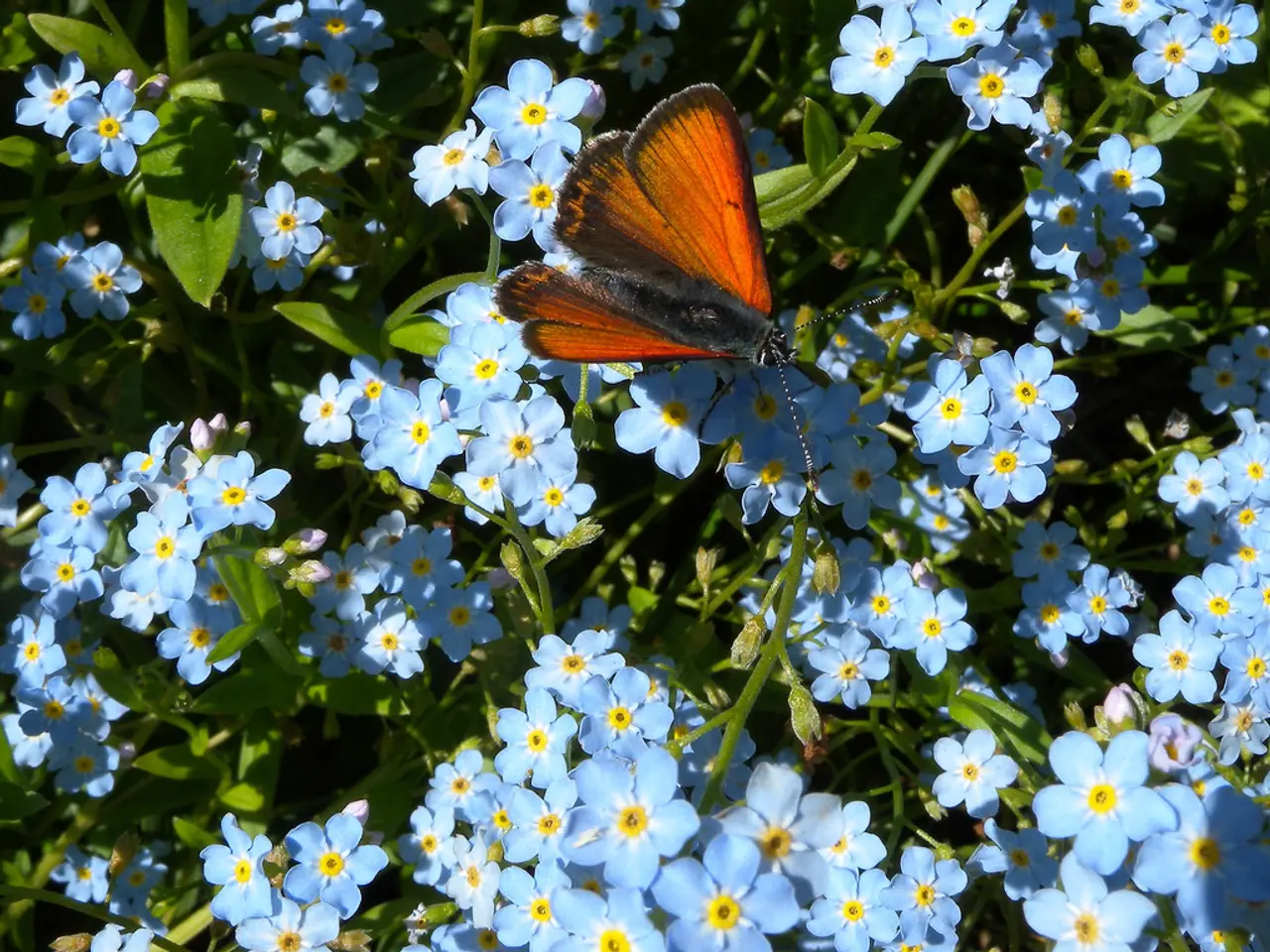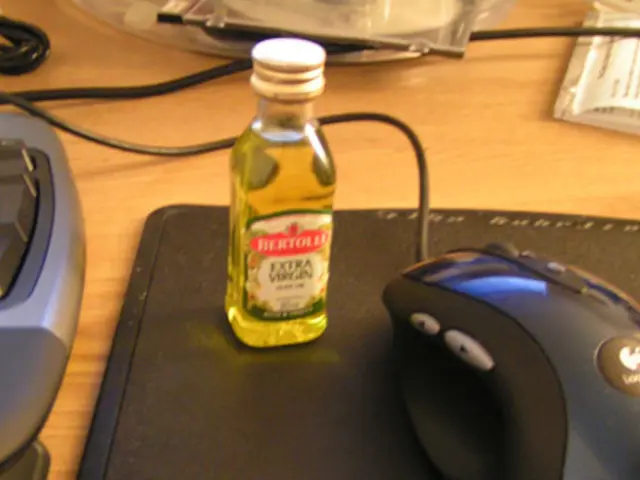Exploring Blue Vervain: Its Recognition and Applications
Blue Vervain, scientifically known as Verbena hastata, is a fascinating perennial herbaceous plant native to North America. This plant is commonly found in wetlands and moist areas across the United States and Canada.
Standing tall at up to 6 feet, Blue Vervain is easily recognisable by its petioled leaves, which are oppositely arranged, spear-shaped, and toothed, about 6 inches long and 1 inch wide. The leaves are attached to the main stem by a small stem, giving them a distinct appearance.
The flowers of Blue Vervain are small, five-lobed, and tubular with little fragrance, generally a bluish-purple colour. They form on pencil-shaped spikes that protrude from the stems, tightly packed with flowers and about 5 inches long. Each flower is replaced with four reddish-brown nutlets about 2mm long and oblongoid in shape.
Blue Vervain is known by common names such as American Vervain, Simpler's Joy, Enchanter's Plant, and Swamp Verbena. It's a key component of a traditional antimalarial remedy in Southern Nigeria and has been used for medicinal purposes for centuries.
Primarily, Blue Vervain is used to treat anxiety, insomnia, and depression, balance hormones, reduce inflammation, and soothe the nervous system. However, it's important to note that Blue Vervain may stimulate the uterus and isn't recommended during pregnancy. It may also interfere with blood pressure medication and hormone therapy. In large quantities, it may cause vomiting and diarrhea.
Blue Vervain is edible and can be harvested for its roots, leaves, and seeds. It's an important pollinator plant, so it's recommended to harvest it respectfully, particularly during the flowering season, typically between June and September.
The stems of Blue Vervain are red or green, square, and covered in fine white hairs. Its leaves differ from those of Purple Loosestrife, as they have toothed edges, unlike the smooth edges of Purple Loosestrife leaves. Hoary Vervain leaves, on the other hand, are broader, generally oval to egg-shaped, and only 2 to 3 inches long, unlike Blue Vervain leaves.
Blue Vervain thrives in wet soils that receive full to partial sun. It's relatively common across its native range, making it a valuable addition to any garden or wetland area.
Read also:
- Inadequate supply of accessible housing overlooks London's disabled community
- Strange discovery in EU: Rabbits found with unusual appendages resembling tentacles on their heads
- Duration of a Travelling Blood Clot: Time Scale Explained
- Fainting versus Seizures: Overlaps, Distinctions, and Proper Responses






